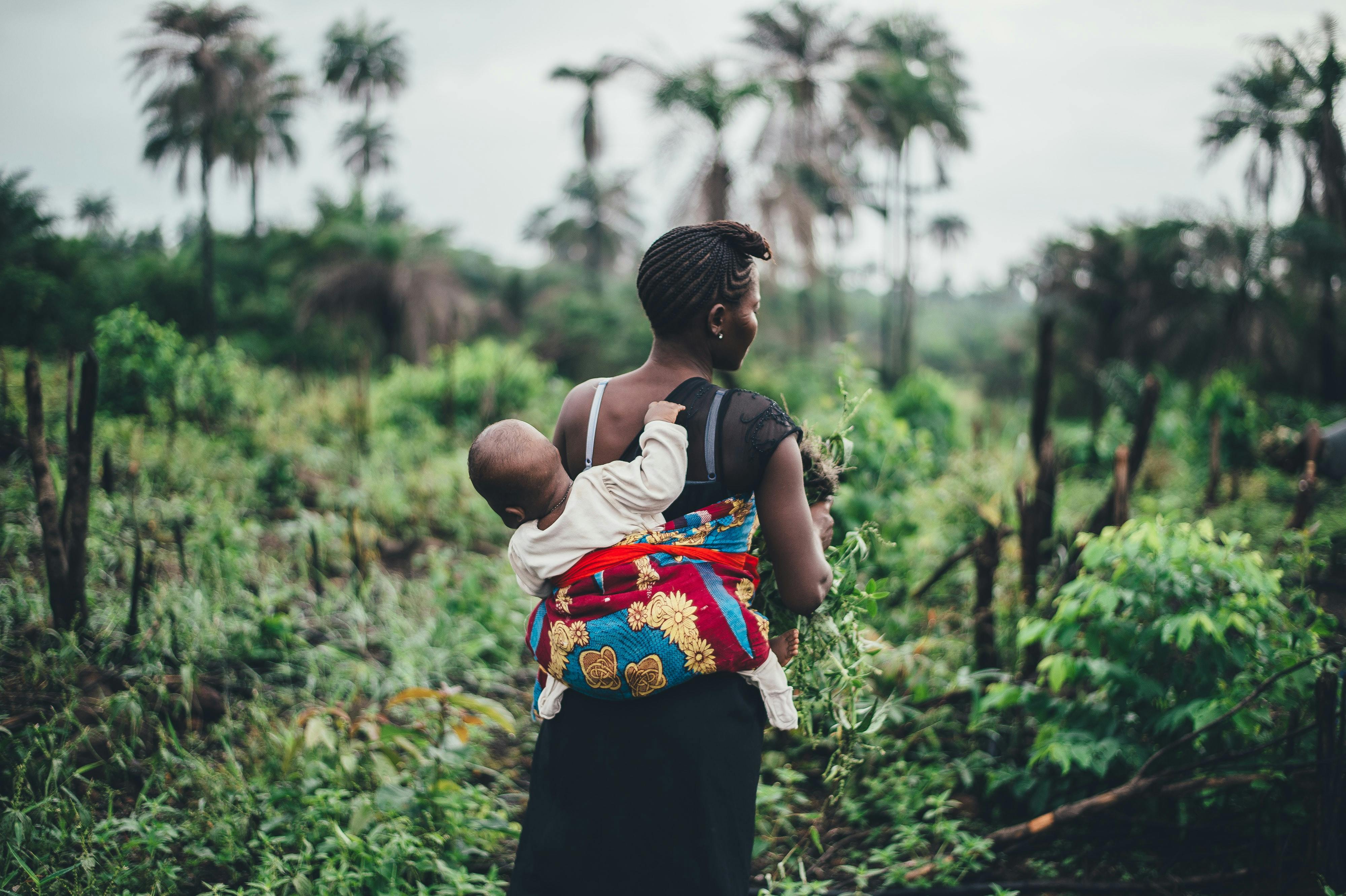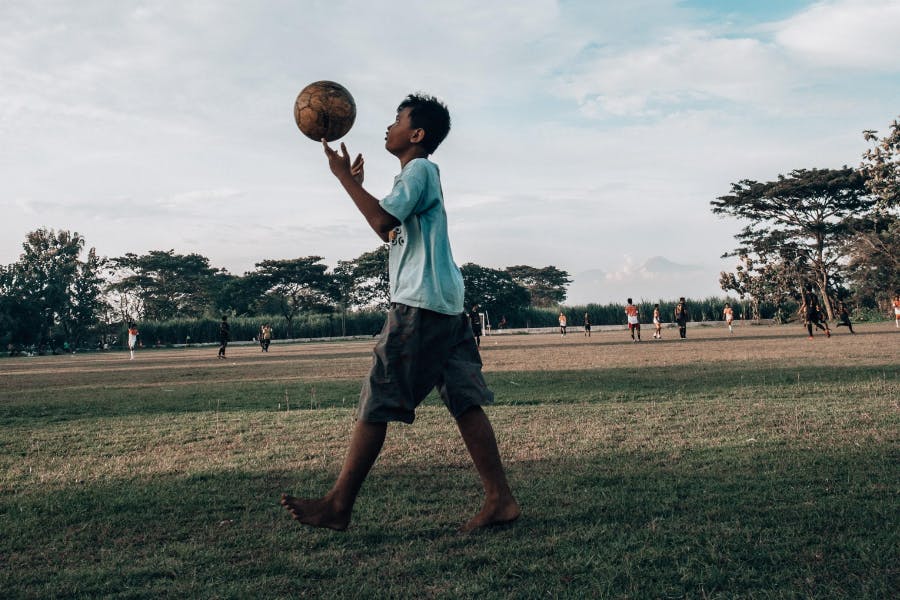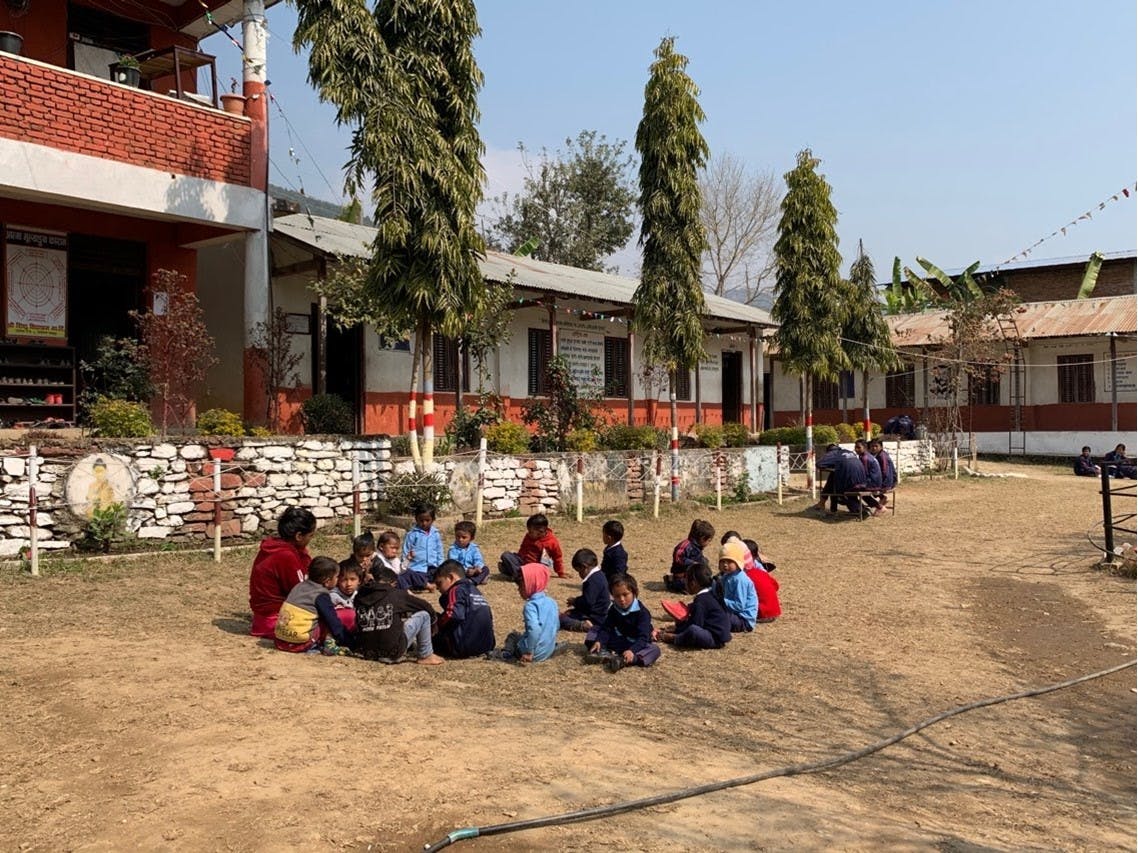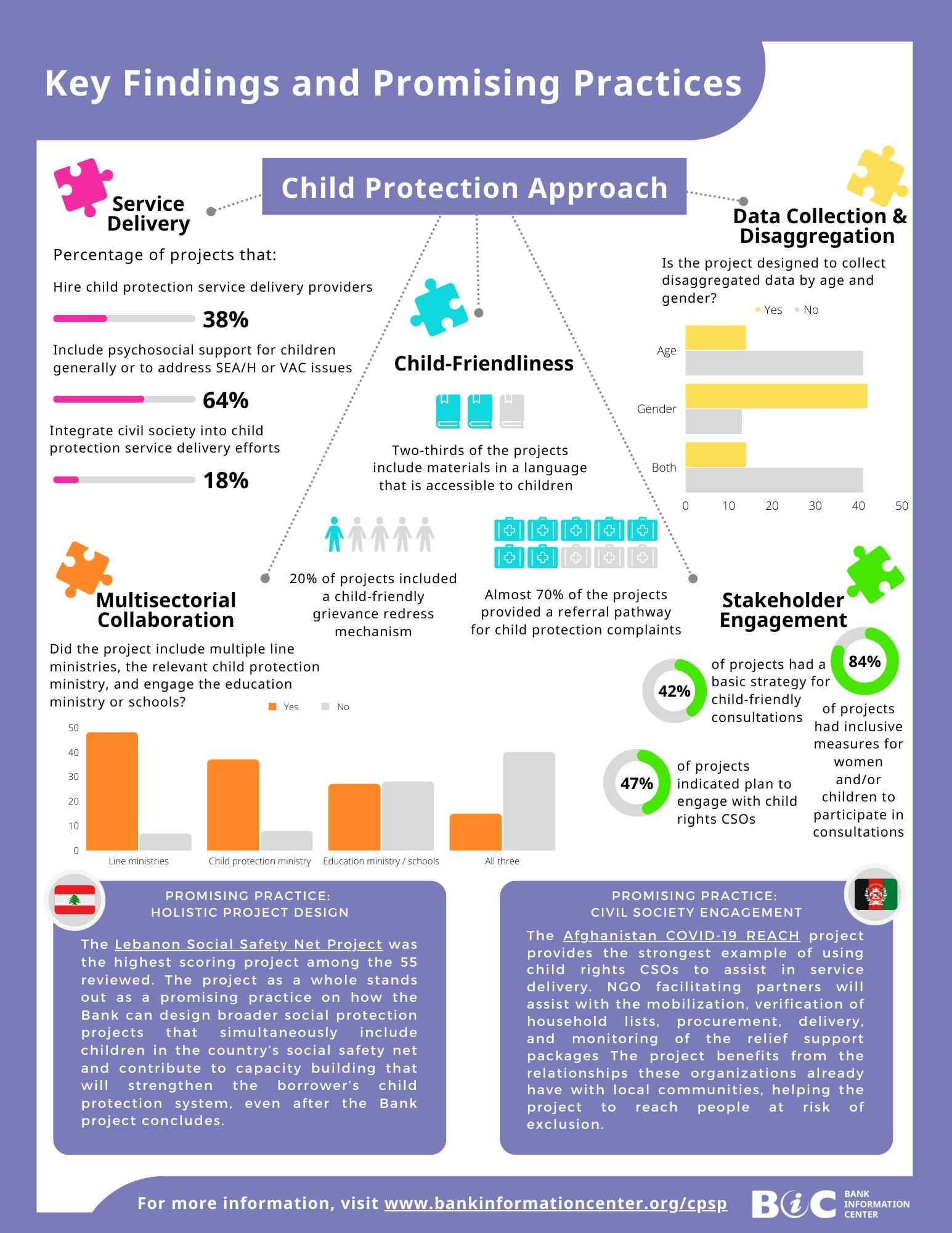Over $10 billion of this sum has been dispersed through the Bank's Social Protection and Jobs Global Practice, a potentially useful vehicle for the delivery of child protection services as social protection projects are well positioned to identify and reach those most vulnerable to violence, abuse, and exploitation.
How is the World Bank addressing Child Protection in its COVID-19 Social Protection response?
BIC conducted an analysis of how 55 World Bank COVID-19 social protection projects have included child protection, highlighting some promising practices and offering recommendations to inform future project design to strengthen child protection components.
Read the reportThe World Bank’s COVID-19 response commitment of $157 billion has the potential to have significant impacts on borrowing countries.

We analyzed 55 COVID-19 social protection projects for how they incorporated child protection across 5 key themes.
Projects were assessed on the basis of the project’s inclusion of specific elements that contribute to child protection and/or child protection systems strengthening, directly and indirectly. Our assessment focused on five broad categories of child protection: (1) Service delivery; (2) Multisectoral collaboration; (3) Child-friendliness; (4) Stakeholder engagement; and (5) Data collection and disaggregation.
A number of COVID-19 social protection projects did include specific components and some innovative approaches to child protection systems strengthening, which is exciting. What is missing, however, is a common approach or strategy. For the Bank to enhance child protection components across projects, a coordinated approach and a learning mindset will be key.
Coco Lammers
Child Rights Campaign Manager
Stat
4%
Only two of the 55 projects included child rights organizations in child protection systems strengthening.
Stat
38%
of projects (21 projects) included provisions for hiring child service delivery providers as children’s access to crucial services has been disrupted by the COVID-19 pandemic and its ensuing lockdowns
Stat
64%
of projects (35 projects) included psychosocial support for children, either generally or specifically to address SEA/H or VAC issues.
Stat
27%
of projects (15 projects) included multiple line ministries cutting across children’s issues, involved a relevant child protection ministry, and engaged with the education ministry or schools.
Stat
20%
of projects (11 projects) included a “child-friendly” GRM.
Stat
67%
of projects (37 projects) include materials in a language that is accessible to children.
Stat
84%
of projects (46 projects) included measures in stakeholder engagement plans that were accessible to women and/or children.
BIC | Taking Action
Lebanon
Promising Practice: Holistic project design
The Lebanon Social Safety Net Project was the highest scoring project among the 55 reviewed. The project as a whole stands out as a promising practice on how the Bank can design broader social protection projects that simultaneously include children in the country’s social safety net and contribute to capacity building that will strengthen the borrower’s child protection system, even after the Bank project concludes.
BIC | Taking Action
Brazil
Promising Practice: Service provision
The Brazil Salvador Social Multi-Sector Service Delivery Project is a positive example of strengthening child protection systems through the hiring of service providers. The project will finance the recruitment and assignment of qualified professionals such as psychologists and social workers to improve capacity of a face-to-face social work service offered to families in vulnerable situations.
BIC | Taking Action
Afghanistan
Promising Practice: Civil society engagement
The Afghanistan COVID-19 REACH project provides the strongest example of using child rights CSOs to assist in service delivery. By using civil society facilitating partners, the project benefits from the relationships these organizations already have with local communities, helping the project to reach people at risk of exclusion.
BIC | Taking Action
Maldives
Promising Practice: Child-friendly GRM
The Grievance Redress Mechanism (GRM) set up for the Maldives COVID-19 Emergency Income Support Project provides a good example of the steps the Bank can take to establish a child-friendly GRM. These included: training for all project workers and first responders on GBV prevention and child protection so they can best respond to disclosures; various accessible forms of submitting grievances; home visits from Island Council workers; and, a robust communications campaign on the heightened risk of child abuse and sexual and gender based violence, how to disclose cases, and where support services can be accessed.
What steps can the World Bank take to strengthen project components around child protection in its COVID-19 social protection lending?
BIC recommends five key actions the Bank should take to properly utilize social protection projects and help create a post-COVID-19 world that protects children and gives them the chance to thrive.
Explore our findings
As the Bank strives to help countries build back better from the COVID-19 pandemic, efforts to strengthen social protection and safety nets need to place children at the center or risk leaving an entire generation behind. To do this effectively, the Bank must take a long-term approach to a short-term response. This will take political will, technical expertise, and coordination at local, national, and headquarters levels in both project design and implementation. For more information on our findings and recommendations, please read our full report.







